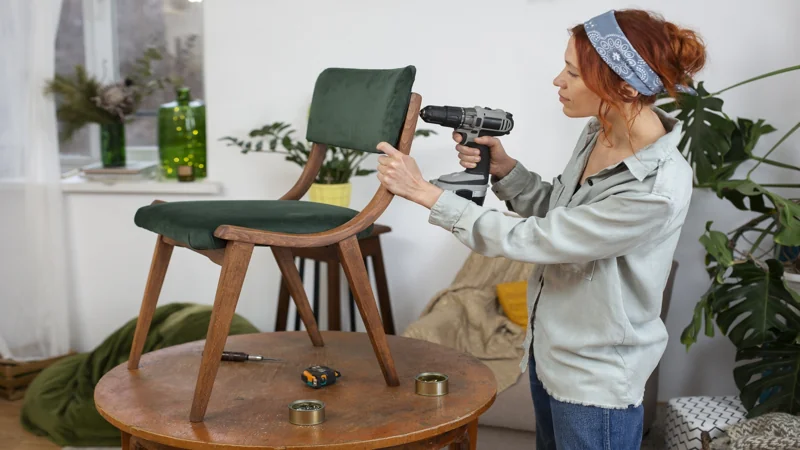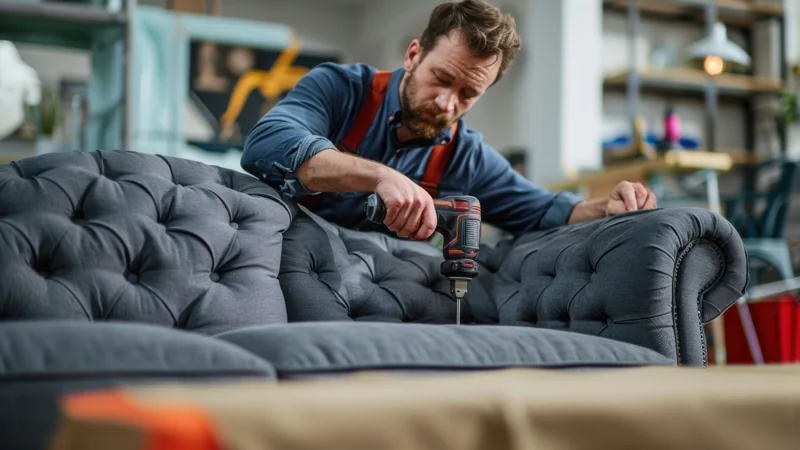Time can have strong effects, especially on inanimate things such as your chairs. These chairs can lose their charm – with time, the fabric starts to become worn down, colors start to fade, and the designs simply become outdated. Now, there is no need to just replace the entire thing; you can reupholster the chair. It is a cost-effective way to refresh its look and increase its lifespan. Whether it’s an office chair, a classic Arabic Majlis seat, or any other type of chair, upholstery can bring it back to life.
Today, we will be offering you an easy guide on how to change the chair upholstery. This is a DIY guide, but if you prefer more expert craftsmanship, we recommend talking to Upholstery Companies in Dubai.
Tools and Materials Needed
Before you start changing the chair upholstery, you will need some tools and materials. These are the things you need:
- New upholstery fabric
- Foam padding
- Fabric Scissors
- Needle Nose Pliers
- Staples & a Staple Gun
- Screwdriver
- Measuring Tape
- Upholstery tacks
- Hot Glue Gun

5-Step Guide For Changing Chair Upholstery
This guide consists of 5 steps for the upholstery of a chair, but know this: they are all fairly technical. Follow each step to the letter on how to change chair upholstery.
Step 1: Remove the Old Upholstery
Whether it’s for the Custom Sofa Upholstery or the chair, you need to remove the seat and the backrest. Use the screwdriver to take these off and carefully disassemble the attached upholstery. Use the pliers to pull out the nails or staples that secure the fabric in place. If you see the padding to be damaged or flattened, it’s better to replace it for improved comfort & support.
Step 2: Measure and Cut the New Fabric
To accurately measure and cut the new fabric, you will need to lay out the old fabric as a template. If the previous fabric is too damaged, measure your seats and backrest, simply leave 2 to 3 inches extra on all sides for better adjustments. It’s best to choose durable and easy-to-maintain fabrics. Some of the popular options in that regard are linen, velvet, and synthetic fabrics.
Step 3: Replace Foam and Padding
If the chair’s foam is also damaged, you must cut a new piece of it – it should match the seat’s size. Use either the fabric glue or the spray adhesive to secure this foam onto the seat for a firm grip.
Step 4: Attach the New Upholstery
Now is the part where you must position the fabric over the seat – do it carefully so that it covers all sides evenly. Start stapling the fabric from the middle of each side, and do not forget to pull on the fabric as you go. It is recommended that you work your way outwards to the corners instead of inwards to the middle. This way, the new upholstery will have a professional look – trim the excess fabric to prevent bulkiness.
Step 5: Reassemble the Chair
Now just reattach the seat and the backrest – use the original screws to secure the new upholstery back to the chair frame. Be sure to double-check all the screws and staples so that the chair remains safe and sturdy.
Extra Touches for a Professional Finish
If you plan to give your chair’s new upholstery a polished look, attach a decorative nail head or a trim tack along its edges. Use a fabric protector spray to improve the stain resistance and longevity of the upholstery.
When to Seek Professional Upholstery Services
While DIY upholstery is a rewarding task, there are some chairs, like antique pieces or custom ones, that need professional expertise. You can employ the help of professional upholstery service providers who do this kind of furniture restoration. If the chair has soft carvings, structural issues, or complex fabric designs, you need a professional touch.
Conclusion
Changing your chair upholstery is the proper way to refresh your old furniture without needing to buy a new one. Whether it’s revamping the old dining chair or your Arabic majlis seating, our guide remains the same and simple. In case of a more professional touch, we recommend getting the help of professional upholstery services for the best aesthetics and comfort.






